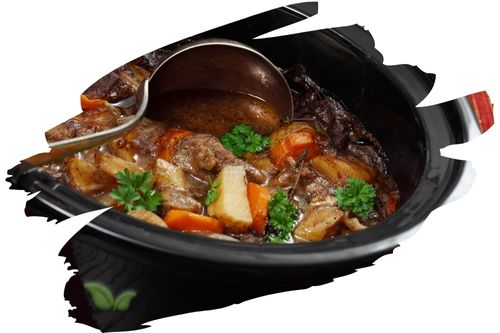
Introduction
Tamarind, also known as the "Sweet and Sour Pulp," is a tropical fruit that has been an integral part of Asian cuisine for centuries. This versatile fruit offers a delightful blend of sweetness and tanginess, making it a favorite ingredient in various dishes. In this comprehensive article, we will explore the origins of tamarind, its culinary applications, health benefits, and more. Let's embark on a flavorful journey and uncover the secrets of Tamarind: The Sweet and Sour Pulp in Asian Cuisine.
Tamarind: A Brief History
Tamarind's history dates back thousands of years and is believed to have originated in Africa. Traders and explorers brought the fruit to various parts of Asia, including India, Thailand, Malaysia, and the Philippines. Its popularity quickly spread across the continent due to its rich flavor and remarkable culinary properties.
Culinary Uses of Tamarind
Tamarind is widely used in Asian cooking for its unique taste and versatility. The fruit is available in various forms, including fresh pods, paste, concentrate, and powder. Here are some popular culinary uses of Tamarind: The Sweet and Sour Pulp in Asian Cuisine:
-
Tamarind Chutney: A delectable chutney made with tamarind, jaggery, and spices that perfectly complements samosas, pakoras, and other savory snacks.
-
Pad Thai: The iconic Thai stir-fried noodle dish is often prepared with tamarind paste, lending it a characteristic sweet and tangy flavor.
-
Tamarind Soup: A comforting soup found in many Southeast Asian countries, featuring tamarind as a key ingredient, combined with vegetables, meat, or seafood.
-
Tamarind Glaze: A luscious glaze made with tamarind, soy sauce, and honey, ideal for marinating grilled meats and seafood.
-
Tamarind Rice: A South Indian specialty where rice is flavored with tamarind pulp, curry leaves, and various spices.
-
Tamarind Beverages: Refreshing drinks like Tamarind Lemonade and Agua de Tamarindo are popular thirst quenchers on hot days.
-
Tamarind-based Curries: Tamarind adds depth and tanginess to many Asian curries, enhancing the overall flavor profile.
Health Benefits of Tamarind
Apart from its culinary value, Tamarind: The Sweet and Sour Pulp in Asian Cuisine offers an array of health benefits. It is a rich source of various essential nutrients and compounds:
-
Antioxidants: Tamarind contains potent antioxidants like vitamin C and flavonoids, which help neutralize harmful free radicals in the body.
-
Digestive Aid: The natural tartness of tamarind aids in digestion and alleviates issues like constipation.
-
Heart Health: Tamarind may help lower cholesterol levels and reduce the risk of heart disease.
-
Weight Management: The fiber content in tamarind contributes to a feeling of fullness, potentially aiding in weight management.
-
Immune Booster: Its high vitamin C content boosts the immune system and helps the body fight off infections.
-
Anti-Inflammatory Properties: Tamarind's anti-inflammatory properties may help reduce inflammation and alleviate joint pain.
Tamarind Varieties
Tamarind comes in different varieties, each with its own distinctive taste and characteristics. Some popular types of tamarind include:
-
Sweet Tamarind: This variety is known for its balanced sweetness and tartness, making it a preferred choice for snacks and desserts.
-
Sour Tamarind: As the name suggests, this type of tamarind has a more pronounced tanginess, making it ideal for savory dishes and soups.
-
Seedless Tamarind: This variety has little to no seeds, making it convenient for culinary purposes.
-
Compressed Tamarind: It is a concentrated form of tamarind, usually in block or cake form, often used to make tamarind paste.
Frequently Asked Questions about Tamarind
1. What is the best way to store tamarind?
Tamarind can be stored in various forms, but it is best to store fresh tamarind pods in an airtight container in a cool, dry place. Tamarind paste can be refrigerated for longer shelf life.
2. How do I make tamarind paste at home?
To make tamarind paste, soak tamarind pods in warm water for a few hours, then extract the pulp and strain it to remove seeds and fibers. The resulting thick liquid is your homemade tamarind paste.
3. Can tamarind be used in desserts?
Absolutely! Tamarind can add a unique twist to desserts. Try tamarind-infused sorbets or incorporate tamarind chutney in fruit-based desserts for a delightful contrast of flavors.
4. Is tamarind safe during pregnancy?
Tamarind, when consumed in moderate amounts, is generally safe during pregnancy. However, it is advisable to consult a healthcare professional before adding it to your diet.
5. Can tamarind be used in non-Asian cuisines?
Certainly! Tamarind's sweet and sour notes can complement various dishes from different cuisines, providing an exciting fusion of flavors.
6. How can I use tamarind to tenderize meat?
Tamarind contains natural enzymes that can tenderize meat. To use tamarind for this purpose, marinate the meat in tamarind paste for a few hours before cooking.
Conclusion
Tamarind: The Sweet and Sour Pulp in Asian Cuisine is truly a gift from nature that has enriched the culinary world with its distinctive taste and numerous health benefits. From delightful chutneys to tangy soups and curries, tamarind adds a burst of flavor to Asian dishes. So, the next time you come across this exotic fruit, don't hesitate to embrace its sweet and sour allure in your kitchen. Savor the goodness of Tamarind: The Sweet and Sour Pulp in Asian Cuisine and elevate your culinary adventures.
Alert: While spices can have many beneficial properties for health, using them for medical purposes should be done under the guidance and supervision of a healthcare professional or specialist. Some spices may interact with medications or cause adverse reactions in certain individuals, and it is important to use them safely and appropriately. If you are considering using spices for a medical condition, it is important to consult with a healthcare professional before doing so.




















































